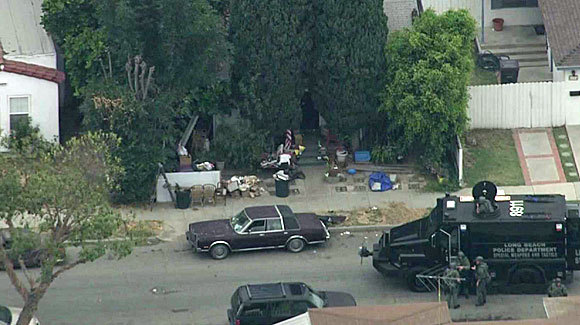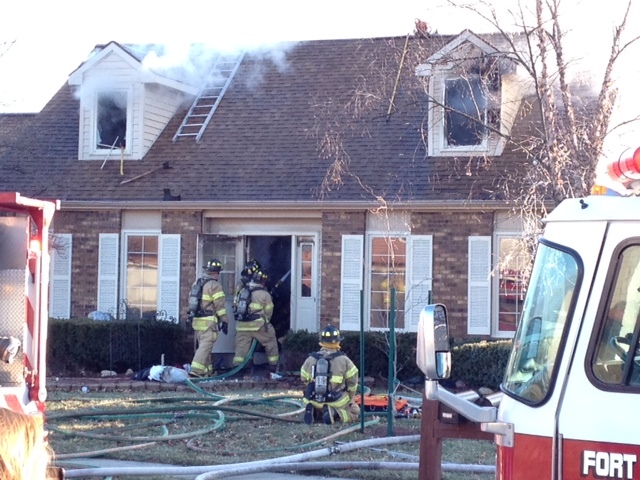On April 6th, 2013 I attended the Wyoming County Fire School held in Saulsville, WV at the Southern WV Community College. During my 6+ years of service in the Fire and EMS field, training like this is normal. I registered with about 30 other first responders for a class called “Hoarding Fires” taught by Charleston Firefighter/Paramedic Ryan Pennington.
While I have had innumerable training sessions on everything from restaurant fires, residential fires, brush fires, and vehicle fires, I had never received a hoarding class. I honestly never gave it any thought, just assumed that since there is more fuel to burn in a hoarding or heavy content fire, you would just use more water and a bigger shovel.
How wrong I was… The class only lasted for about 4 hours, but it blew me and my fellow firemen away how something that we deal with on a fairly regular basis was so dangerous. We weren't hounded with scientific theories and clinical study findings, just simply the proven and indisputable facts of what signs always present, and how to proceed safely.
One thing Ryan repeatedly expressed was the need to do a
“380” degree scene size-up, which included not only the standard trip completely around the residence to assess for hazards, but to also look for the signs of a possible heavy content fire. Everything that was taught in the course was logged away in the back of our minds, and we moved on to lunch, and then the next class.
Once classes had let out for the day I returned home and got ready for my shift as a Deputy Sheriff in my county. Being a Deputy, Volunteer Firefighter, and Paramedic has it’s advantages. My job allows me the flexibility to respond with my fire company, the Pineville Fire Dept. St. 400, when I am not on another task. Every time I hear the tones drop for my department, I go to the scene, and a lot of times I arrive before them.
I try to give a quick assessment, a scene size-up, and fill in the gaps of any information that may have not been relayed to them during the page. Tonight was no different. Around 8:30pm I am driving around the area when I hear the tones for my department drop and the dispatcher advise there is a structure fire just outside of city limits, about 2 miles away from me. I mark en-route and arrive on scene about the time my department and their automatic mutual aid go en-route. I see a single story residential dwelling with heavy smoke and flames presenting from the “A” side.
I position my cruiser past it to deny any traffic coming down and blocking the engine, and then radio Capt. Mike Johnson who was responding on the first due engine, and give him a quick size-up. I then get out and walk around the residence checking for any hazards, and ask the neighbors if the owners are home. I walk back towards my cruiser to keep a few eager onlookers in check as the engine arrives. After taking care of my official duties, I turn back to fire side of it and go back to the residence to see if any of my fire dept guys need anything.
As I go back to the residence I look through a large window in the front of the house and notice that all I can see is things piled up in front of the window. Then what I had just learned that morning suddenly comes back into my mind. “Do a 380” I can hear Ryan saying, “Take a few extra seconds to do the scene survey and it may save you an injury or worse.” I go back to the engine where Capt Johnson is the incident commander and tell him, somewhat enthusiastically, that I think this is a heavy contents fire. As I am taking to him Firefighter Josh England, who had been in class with us that morning, came over with the same excitement I had and said “Look in those windows!!
This is a heavy contents fire!”
“Are we sure that the residents are not in there?” Capt Johnson asked me, “Yes, the neighbors saw them leave prior to the fire becoming visible” I responded. “We’re not going in. Defensive attack only” And with those orders from the Capt, 2 1¾” lines were placed at the front and rear of the residence, and 1 2½” was placed at the side and we began our defensive attack.
After the fire was knocked down we began doing overhaul. As the fire had burned away a great portion of the front of the residence, pile after pile, after pile, of garbage was visible in the front rooms of the residence. One group of firefighters went to the rear of the residence, which was still intact, and had to force the door open because there was so much trash piled up against it. An attached garage was full to the top with trash literally touching the ceiling.
The visible rooms were all full of garbage as far as the eye could see. While no official cause to this fire has been determined at this time, due to several factors, the cause of this fire is suspicious. It is possible that a flammable source was added to the residence and ignited, which only added to the already dangerous heavy content environment.
We saw the signs, Capt Johnson made the right decision, we got the job done, and most importantly everyone went home safely. Had we not have known to do a 380 survey, didn't know how to recognize the signs of a heavy contents fire and didn't know the added dangers of them, there is a great possibility that we would have treated this as a “normal” residential fire and may have proceeded with an interior attack.
This could have resulted in one of our men getting injured, or even killed. There is no doubt that the heavy contents course taught to us by Ryan Pennington completely changed our way of thinking about fires, and taught us how to assess the situation a little closer before we go about putting out the fire. It may have just kept us from making a serious mistake and costing us the health of one of our brothers. Thankfully we are all still here alive and well, a little smarter, and all very much jump seat ready.
Dwight Meadows,
Fire-Medic
Pineville WV Fire Dept.











 How clean can it be. Hoarding Dangers
How clean can it be. Hoarding Dangers










